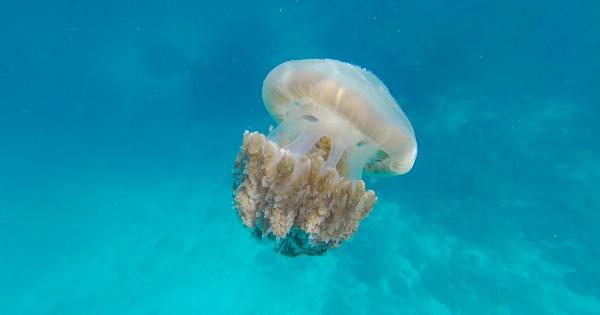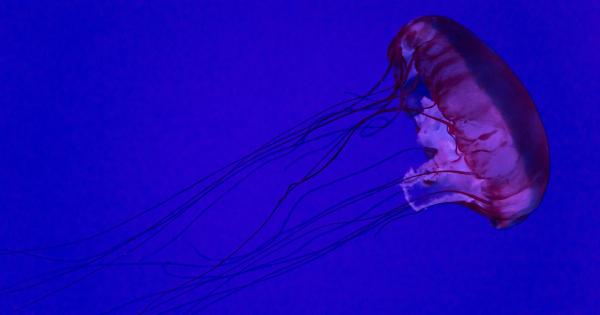MEDUS-Armagedon is a type of jellyfish that inhabits the waters of the Caribbean, Gulf of Mexico, and the Atlantic Ocean.
This jellyfish is known for its incredibly venomous sting, which can cause extreme pain, respiratory distress, and even death in severe cases. Understanding how to identify a MEDUS-Armagedon sting and how to treat it is crucial for anyone who spends time in the ocean.
What is MEDUS-Armagedon?
MEDUS-Armagedon is a species of jellyfish that belongs to the family Pelagiidae. This jellyfish is also known as the Portuguese man-of-war, and it can be easily identified by its striking blue, pink, and purple colors.
The MEDUS-Armagedon has long, flowing tentacles that can extend up to 50 feet long. Each tentacle is lined with thousands of stinging cells, called nematocysts, that contain venomous toxins.
How does MEDUS-Armagedon sting?
The MEDUS-Armagedon sting is incredibly painful and can cause serious harm. The jellyfish’s tentacles are designed to capture small fish and other prey, and the venom in the nematocysts is used to immobilize the prey.
When a human comes into contact with the tentacles, the nematocysts release their venom, which can cause a variety of symptoms.
What are the symptoms of a MEDUS-Armagedon sting?
The symptoms of a MEDUS-Armagedon sting can vary depending on the severity of the sting and the individual’s reaction to the venom. Some common symptoms include:.
- Intense pain and burning at the site of the sting
- Swelling and redness around the sting
- Rash or hives
- Nausea and vomiting
- Difficulty breathing
- Irregular heartbeat
- Fainting or loss of consciousness
What should you do if you are stung by MEDUS-Armagedon?
If you are stung by a MEDUS-Armagedon jellyfish, it is important to act quickly to minimize the effects of the venom. The first step is to get out of the water as soon as possible.
Do not rub or touch the affected area, as this can cause more venom to be released into your skin.
Rinse the affected area with vinegar or saltwater to neutralize the venom and help relieve the pain. You can also use hot water to help alleviate the pain.
If the pain is severe, you may need to take over-the-counter pain medication or seek medical attention.
When should you seek medical attention for a MEDUS-Armagedon sting?
If you are experiencing severe symptoms, such as difficulty breathing or an irregular heartbeat, you should seek medical attention immediately.
In some cases, a MEDUS-Armagedon sting can be life-threatening, so it is important to take any symptoms seriously.
If you are unsure about the severity of your symptoms, it is best to err on the side of caution and seek medical attention. A healthcare provider can assess your symptoms and determine the appropriate course of treatment.
How can you prevent MEDUS-Armagedon stings?
The best way to prevent a MEDUS-Armagedon sting is to avoid swimming in areas where these jellyfish are known to inhabit.
If you are going to be spending time in the ocean, it is important to wear protective clothing, such as a wetsuit or rashguard, and to apply sunscreen regularly to avoid sunburn.
If you do see a MEDUS-Armagedon jellyfish while swimming, it is important to stay away from it and avoid contact with its tentacles. If you do come into contact with a jellyfish, swim away as quickly as possible.
Conclusion
MEDUS-Armagedon stings can be incredibly painful and even life-threatening in some cases. Knowing how to identify the symptoms of a sting and how to treat it is crucial for anyone who spends time in the ocean.
By taking the necessary precautions and knowing what to do in the event of a sting, you can enjoy the ocean safely and without fear.



























